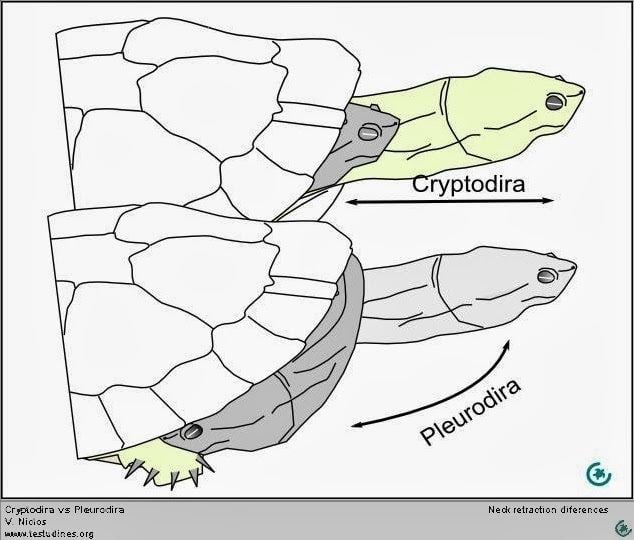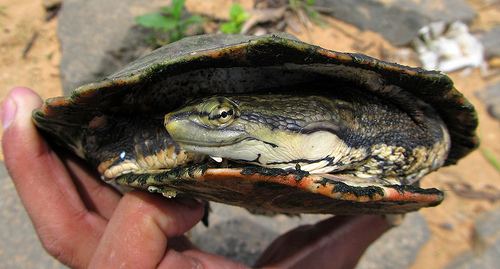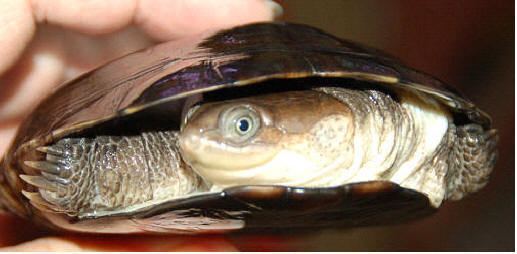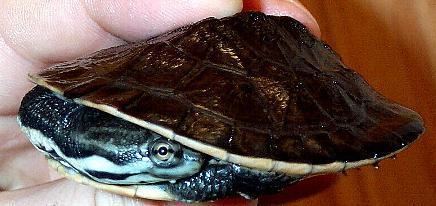Scientific name Pleurodira Rank Suborder | Higher classification Turtle | |
 | ||
Lower classifications Chelidae, Pelomedusidae, Podocnemis, Pelomedusa, Carbonemys | ||
The Pleurodira are one of the two living suborders of turtles, the other being the Cryptodira. In many cases in the nomenclature of animals, ranks such as suborder are considered of little importance apart from nomenclatural or taxonomic reasons. However, this is not the case with the suborders of the turtles. This division represents a very deep evolutionary divide between two very different types of turtles. The physical differences between them, although anatomical and largely internal, are nonetheless significant, and the zoogeographic implications of them are substantial. The Pleurodira are known more commonly as the side-necked turtles and the name Pleurodira quite literally translates to side neck, whereas the Cryptodira are known as hidden-necked turtles. The Pleurodira turtles are restricted to the Southern Hemisphere, largely to Australia, South America, and Africa. Within the Pleurodira, two living families are represented: Chelidae, also known as the Austro-South American side-necked turtles, and the Pelomedusidae, also known as the Afro-South American side-necked turtles.

Definition and description

The Pleurodira are identified by the method with which they withdraw their heads into their shells. In these turtles, the neck is bent in the horizontal plane, drawing the head into a space in front of one of the front legs. A larger overhang of the carapace helps to protect the neck, which remains partially exposed after retraction. This differs from the method employed by a cryptodiran, which tucks its head and neck between its forelegs, within the shell.

The different methods of bending the neck require completely different anatomies of the cervical vertebrae. All extant turtles studied so far have eight vertebrae in the neck. In the Pleurodira, these vertebrae are narrow in cross-section and spool-shaped with biconvex centra on one or more of the cervicals. These centra act as a double joint, allowing a large degree of sideways movement and providing a means of folding the neck onto itself in the lateral plane. Conversely, in the Cryptodira, the neck bones are wide and flat. The biconvex centra in some of the cryptodiran cervicals allow the neck to fold onto itself in the vertical plane.

Pleurodirans also differ from cryptodirans in the emarginations of their skulls. Skull emargination provides room and anchorage for the jaw muscles. The connection points and the position of the emarginations relate to different bones of the skull.
Another difference is in the arrangement of the bones of the shell and the scutes overlaying them. Pleurodiran turtles have 13 scutes on the plastron of the shell, whereas cryptodiran turtles only have 12. The extra scute is called the intergular and is at the front of the plastron between the gular scutes. Pelomedusid turtles also possess mesoplastra, further differentiaing this group.
